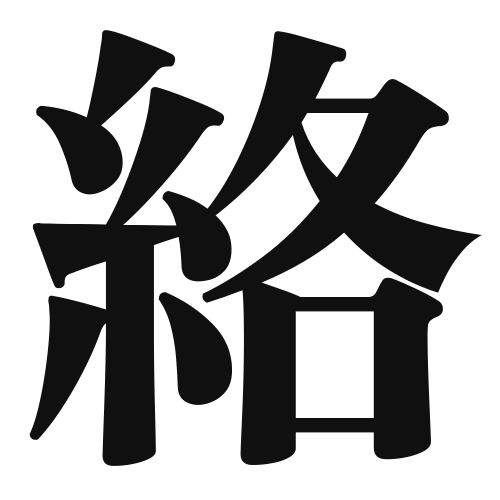1. Overview of Meaning
The kanji 絡 (raku) generally means “to entwine” or “to connect.” It conveys the idea of linking or binding things together, whether physically or metaphorically.
2. Formation and Radical
Formation of the Kanji: The kanji 絡 is a compound character (会意文字) that combines elements to convey its meaning. It consists of the radical 糸 (ito), which means “thread,” and the character 各 (kaku), which adds the nuance of connection or interaction.
Radical: The radical of 絡 is 糸, indicating that it relates to threads or fibers, emphasizing the idea of intertwining.
3. Examples of Usage
Common Words and Phrases: Some frequently used words that include 絡 are:
- 絡む (karamu) – to entwine or to get tangled
- 絡繰り (karaguri) – mechanism or intricate workings
Example Sentences in Daily Conversation:
- 「彼の髪が木の枝に絡んでしまった。」
(His hair got tangled in the tree branches.) - 「この問題は複雑に絡んでいる。」
(This issue is intricately connected.)
4. Synonyms and Antonyms
Similar Kanji: A kanji with a similar meaning is 結 (ketsu), which means “to tie” or “to bind.” While both kanji involve the concept of connection, 絡 emphasizes entanglement or intertwining, whereas 結 focuses more on a secure binding.
Antonyms: A kanji that represents the opposite meaning is 解 (kai), which means “to untie” or “to solve.” This kanji conveys the idea of separation or resolution, contrasting with the binding nature of 絡.
5. Cultural and Historical Background
Relation to Japanese Culture: The concept of 絡 is significant in Japanese culture, often symbolizing relationships and connections between people. It reflects the importance of social ties and community.
Proverbs and Idioms: One common expression is 絡み合う (karamiau), which means “to be intertwined” and can refer to complex relationships or situations. This phrase highlights the intricate nature of human connections.
